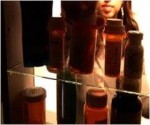 The American College of Emergency Physicians recently found an increase in children requiring medical intervention in states that have decriminalized marijuana. The call rate in theses states have increased by more than 30% per year between 2005 and 2011, while the call rate in non-legal states has not changed. There are currently 18 states and the District of Columbia that have passed legislation allowing medical marijuana, including edible products. George Sam Wang, MD, of the Rocky Mountain Poison and Drug Center in Denver states that these edible marijuana products may be the culprits to increased exposure in children. He states “kids can’t distinguish between products that contain marijuana and those that don’t,” and since edible marijuana tends to “contain higher concentrations of the active ingredient, tetrahydrocannabinol,” adverse effects are more likely to result when children ingest these products.
The American College of Emergency Physicians recently found an increase in children requiring medical intervention in states that have decriminalized marijuana. The call rate in theses states have increased by more than 30% per year between 2005 and 2011, while the call rate in non-legal states has not changed. There are currently 18 states and the District of Columbia that have passed legislation allowing medical marijuana, including edible products. George Sam Wang, MD, of the Rocky Mountain Poison and Drug Center in Denver states that these edible marijuana products may be the culprits to increased exposure in children. He states “kids can’t distinguish between products that contain marijuana and those that don’t,” and since edible marijuana tends to “contain higher concentrations of the active ingredient, tetrahydrocannabinol,” adverse effects are more likely to result when children ingest these products.
These pediatric exposures lead to medical evaluations, clinical effects, and critical care admissions. Researchers say neurologic effects are most common and therapies usually involve administering intravenous fluids. As states continue to decriminalize marijuana, it’s important to advocate for the safety of children who may unknowingly ingest this drug. Requirements such as child-resistant packaging, warning labels, and public education are needed to help mitigate this crisis and keep young children safe.
Source: Science Daily

 This is Poison Awareness Week and the Institute for Women's Health Research sponsored a forum featuring Dr. Carol DesLauriers a pharmacist from the Illinois Poison Center, the nation's oldest poison center. Did you know that nearly 75% of poisoning deaths in the U.S. are due to unintentional poisoning? Unintentional poisoning includes the use of drugs or chemicals for recreational purposes in excessive amounts (an 'overdose'). It also includes the excessive use of drugs or chemicals for non-recreational purposes, such as by a toddler. Unintentional poisoning was second only to motor vehicle crashes as a cause of unintentional injury death for all ages in 2007. Among people 35-54 years old, unintentional poisoning caused more deaths than motors vehicle crashes.
This is Poison Awareness Week and the Institute for Women's Health Research sponsored a forum featuring Dr. Carol DesLauriers a pharmacist from the Illinois Poison Center, the nation's oldest poison center. Did you know that nearly 75% of poisoning deaths in the U.S. are due to unintentional poisoning? Unintentional poisoning includes the use of drugs or chemicals for recreational purposes in excessive amounts (an 'overdose'). It also includes the excessive use of drugs or chemicals for non-recreational purposes, such as by a toddler. Unintentional poisoning was second only to motor vehicle crashes as a cause of unintentional injury death for all ages in 2007. Among people 35-54 years old, unintentional poisoning caused more deaths than motors vehicle crashes.